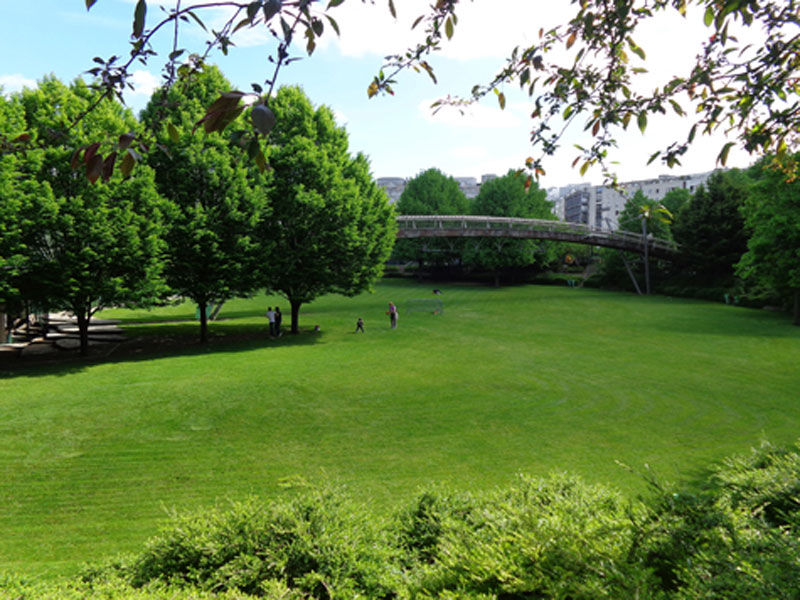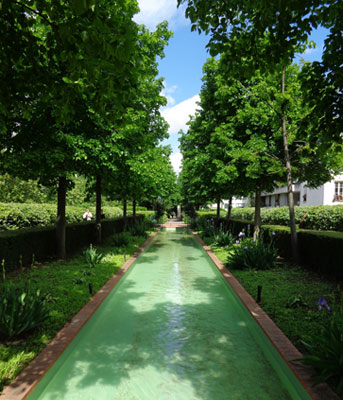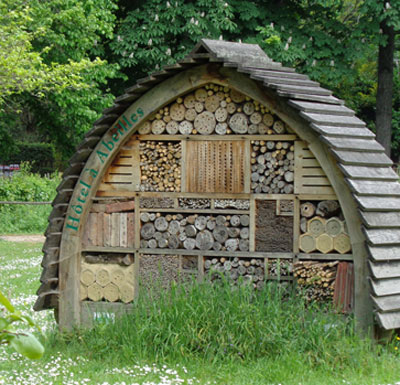Three parks in Paris
This item appears on page 12 of the August 2015 issue.
On a bright but cool, sunny morning during the first week of May in 2015, my daughter Linda and I walked along the quiet shoreline of the Left Bank of the Seine and found the first of three parks we would visit in Paris.
Located next to a small zoo about a 25-minute walk from our hotel, Hôtel Saint-Louis en l’Isle (75 rue Saint-Louis en l’Île), we easily found the Jardin Alpin in the Jardin des Plantes in the 5th arrondissement. The park was first created in 1635 as a royal garden for medicinal plants.
What a lovely, little-talked-about place to stroll through! It was a weekday, so we had it almost all to ourselves. We discovered a winter garden, some hothouses with unusual plants, a rose garden and even a maze for children.
Heading back toward the Seine, we walked along a wide, plane tree-lined path outside the garden, itself. Of special interest to us was a large area dedicated to the “pollinators.”
• From 1859 to 1969, the present Promenade Plantée (in the 12th arrondissement) served as the initial part of a railway that originally connected Paris with Strasbourg.
In the 1980s, city planners announced they were beginning construction on a grand design for the “promenade.” The 4.7-kilometer walk, about half of it elevated above street level on the old rail viaduct, was completed in 1994.
What a delight of peace and quiet this place is now, as everything was created mostly for pedestrians. We saw no cyclists.
Linda and I attempted the entire length of the walk early one morning, but we never quite made the final kilometer, said to be near the Bois de Vincennes (the largest park in Paris, which includes the main zoo). Instead, we finally came out of the dense park onto a busy road, too tired and hot to continue searching for “the finish line.”
The first, elevated part contained leafy trees, fishponds and flower gardens. In a lower area, past a garden and below the viaduct, there was a large grassy park encircled by trees.
Continuing on, at one point off to the side we saw many nice-looking artisan shops, but we weren’t tempted to stop. As we kept going, the path led through the old railroad tunnel. The sculptured-rock interior even had a small fountain on one side, now artistically painted.
The path came out onto a drippy cinder walkway with dense foliage and closed in by high, rocky wet banks on either side.
To reach the promenade, begin at the Place de la Bastille, then walk along the right side of the Opera House for a long block. Hidden behind a wall is an obscure flight of stairs that will get you started upward.
During much of the first part of the walk, you can see rooftops and down into the small backyards and gardens of big houses. If you decide not to continue with the walk, there are stairways along the way that will take you down to street level again.
When we finally stopped, we began our search for the nearest Métro and ended up at the Vincennes, which returned us to familiar ground — another feat in itself!
• It was another sunny but very windy morning in the first week of May when we walked from our hotel to Luxembourg Gardens (Jardin du Luxembourg) in the 6th arrondissement. We saw a few joggers, but, since it was early (10 a.m.), there was nothing open to attract visitors or to make you want to pause on one of the benches for people-watching.
Although we walked around the entire perimeter of the property and through the center near where we had entered the park, we were too cold to really enjoy the area except around the fountain and garden.
MARILYN HILL
Portland, OR



